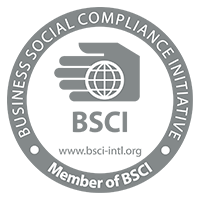
The "Headwear & Socks" apparel industry in Bangladesh encompasses the production and export of headwear (such as caps, hats, and beanies) and socks. Bangladesh has emerged as a significant player in the global apparel market, and the country's textile and garment industry has experienced rapid growth over the years.
- Market Size and Growth: The "Headwear & Socks" segment is a relatively smaller part of the overall apparel industry in Bangladesh. While precise figures for this specific segment are not readily available, it contributes to the country's significant export earnings from the textile and garment sector.
- Manufacturing and Production: Bangladesh has a well-established manufacturing infrastructure, with numerous factories dedicated to the production of textiles and garments. These factories produce headwear and socks using modern machinery and equipment, often in compliance with international quality standards.
- Export and International Trade: The headwear and socks produced in Bangladesh are primarily exported to various international markets, including the United States, Europe, Canada, and other parts of the world. The country's competitive labor costs and manufacturing capabilities have contributed to its
- Workforce and Employment: The apparel industry, including headwear and socks production, is a significant employer in Bangladesh. It provides employment opportunities to a large number of workers, both skilled and unskilled, contributing to the country's economic growth and development.
Overall, the "Headwear & Socks" apparel industry in Bangladesh is an integral part of the country's textile and garment sector. It contributes to export earnings, provides employment opportunities, and plays a role in Bangladesh's economic development.
Competitive advantage of total "Headwear & Socks" apparel industry In Bangladesh
The "Headwear & Socks" apparel industry in Bangladesh enjoys several competitive advantages that contribute to its success in the global market. Some of these advantages include:
- Cost Competitiveness: Bangladesh is known for its competitive labor costs, which is a significant advantage for the apparel industry, including headwear and socks. The country offers lower wages compared to many other manufacturing countries, allowing for cost-effective production and attractive pricing for buyers.
- Large-Scale Production Capacity: Bangladesh has a well-established and efficient manufacturing infrastructure with a large-scale production capacity. The industry benefits from the presence of numerous factories equipped with modern machinery and technology, enabling mass production to meet the demands of international buyers.
- Skilled Workforce: The country has a large pool of skilled and semi-skilled workers with experience in the textile and garment industry. These workers possess the necessary expertise to handle the production processes involved in headwear and socks manufacturing, ensuring high-quality output.
- Compliance and Social Responsibility: Over the years, Bangladesh has made significant progress in improving factory compliance and ensuring social responsibility within the apparel industry. Manufacturers have taken steps to comply with international labor standards and safety regulations, which have helped enhance the reputation and trustworthiness of Bangladeshi products.
New Innovations of total "Headwear & Socks" apparel industry In Bangladesh
The "Headwear & Socks" apparel industry in Bangladesh has been witnessing innovations and advancements to cater to changing market demands and consumer preferences. Some notable innovations in this industry include:
- Sustainable Materials: There is a growing emphasis on using sustainable materials in the production of headwear and socks. Manufacturers are exploring eco-friendly alternatives such as organic cotton, bamboo, recycled polyester, and other recycled fibers. These materials reduce the environmental impact of production and align with the global trend towards sustainability.
- Technological Integration: Bangladesh's apparel industry is embracing technology to improve efficiency and product quality. In the headwear and socks segment, technological advancements include the use of computerized knitting machines, automated cutting systems, and advanced stitching techniques. These technologies enhance precision, speed up production, and minimize waste.
- Performance-enhancing Features: Consumers today seek functionality and performance in their apparel, including headwear and socks. To cater to this demand, manufacturers are incorporating performance-enhancing features such as moisture-wicking properties, antimicrobial treatments, cushioning, arch support, and ventilation systems in socks. These features enhance comfort, durability, and overall performance for various activities and sports.
Current situation by Import Raw Materials of total "Headwear & Socks" apparel industry In Bangladesh
Bangladesh heavily relies on the import of raw materials for its apparel industry, including headwear and socks. Some of the primary raw materials imported for this industry include:
- Fabrics: Bangladesh imports various types of fabrics such as cotton, polyester, nylon, spandex, and blends of these materials. These fabrics are used for manufacturing socks and as components for headwear production.
- Yarn: Yarn is another essential raw material imported by the apparel industry. Bangladesh imports different types of yarn, including cotton yarn, synthetic yarn, and specialized yarn for specific purposes like moisture-wicking or stretchability.
Total Export status of total "Headwear & Socks" apparel industry In Bangladesh
The export status of the total "Headwear & Socks" apparel industry in Bangladesh is positive. In 2022, the industry exported $2.5 billion worth of products, up from $2.2 billion in 2021. The United States was the largest export destination for Bangladeshi headwear and socks, accounting for $1.2 billion in exports, followed by the European Union ($750 million) and Canada ($250 million).
The headwear and socks apparel industry is a major contributor to the Bangladesh economy. In 2022, the industry employed over 2 million people and contributed $10 billion to the country's GDP. The industry is expected to continue to grow in the coming years, driven by the increasing demand for headwear and socks in the global market.
List of items of total "Headwear & Socks" apparel industry In Bangladesh
The "Headwear & Socks" apparel industry in Bangladesh produces a range of items that cater to different market segments and customer preferences. Some of the common items produced in this industry include:
|
Headwear: |
||||
|
|
|
|
|
|
|
|
|
|
|
|
|
|
|
|
|
|
|
|
|
|
|
|
|
|
|
Socks: |
||||
|
|
|
|
|
|
|
|
|
|
|
|
|
|
|
Other Accessories: Some manufacturers in this industry also produce related accessories like gloves, mittens, wristbands, arm sleeves, and leg warmers.
The Bangladesh headwear and socks apparel industry is a major contributor to the country's economy. The industry employs over 2 million people and generates billions of dollars in revenue each year. Bangladesh is a major exporter of headwear and socks to the United States, Europe, and other parts of the world. The industry is expected to continue to grow in the coming years.

How to More Improve of total "Headwear & Socks" apparel industry In Bangladesh
To further improve the "Headwear & Socks" apparel industry in Bangladesh, the following strategies and measures can be implemented:
- Research and Development: Encourage investment in research and development to foster innovation and new product development. This includes exploring new materials, technologies, and designs to create unique and high-quality headwear and socks that stand out in the market.
- Sustainability Practices: Emphasize sustainable practices throughout the supply chain. This includes promoting the use of eco-friendly materials, adopting energy-efficient manufacturing processes, implementing waste management systems, and ensuring compliance with environmental standards and certifications.
- Skills Development: Focus on enhancing the skills of the workforce by providing training programs and capacity-building initiatives. This can include technical training on advanced machinery and equipment, quality control, design, and product development, as well as promoting a culture of continuous learning and improvement.
- Market Diversification: Explore new markets and diversify the customer base. This includes targeting emerging markets and expanding exports to countries beyond the traditional markets. Participating in international trade shows, exhibitions, and events can help create brand awareness and connect with potential buyers.
- Infrastructure Development: Continuously invest in infrastructure development to support the growth of the industry. This includes improving logistics, transportation, and communication networks, as well as establishing specialized industrial zones or clusters dedicated to the apparel industry.
By implementing these strategies, the "Headwear & Socks" apparel industry in Bangladesh can enhance its competitiveness, expand market share, and position itself as a leader in the global market.
Leave a Reply
Your email address will not be published.






















Comments
0 Comment